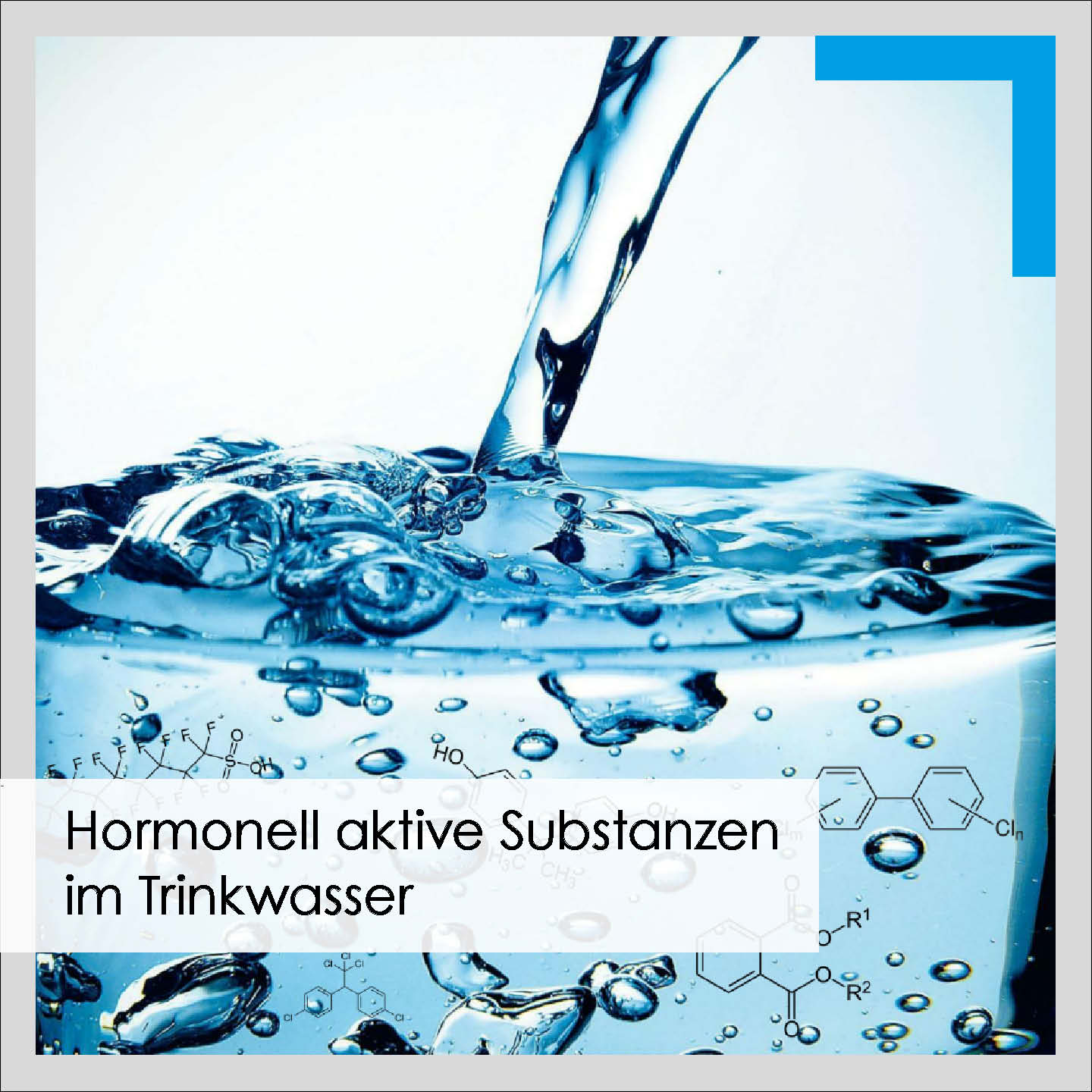
Due to the continuous development of synthetic substances, we are surrounded by chemicals that enter surface and groundwater and eventually our drinking water through various pathways. Wastewater treatment plants are only partially able to remove the abundance of synthetic compounds from wastewater. Among other things, pharmaceutical residues, X-ray contrast media, hormones and hormonally active substances (endocrine disruptors) end up in the drinking water. Due to the high dilution factor, the concentrations of the individual trace substances in drinking water are usually orders of magnitude too low to pose a health risk to humans. However, this does not apply equally to all substances. Even at very low concentrations, endocrine disruptors have an influence on the hormone system of living organisms. Hormones are significantly involved in many processes in the body. These include organ development, reproduction and mood. Endocrine disruptors are very similar in structure to hormones, which means they can act in a similar way to hormones and trigger reactions in the organism. Endocrine disrupting chemicals thus disrupt hormonal communication between cells and can have profound effects on our health. Endocrine disruptors are associated with reproductive disorders, immune disorders, obesity, cancer and other diseases. A prominent example of the sometimes dramatic effects that hormone-like substances can have on the environment is the increased formation of female individuals in fish observed downstream of municipal or industrial sewage treatment plant effluents.
With the further development of the determination limits of analytical methods, it is now possible to detect even the smallest amounts of trace substances in drinking water. Endocrine disrupting chemicals are found in many everyday consumer products. The best-known endocrine disruptors include polychlorinated biphenyls (PCBs), plasticisers such as phthalates and bisphenol A (BPA), dioxins, PFCs, PFOS, PBDEs and the insecticide DDT. Many of these EDs are chemically persistent and accumulate in the environment and in organisms. Due to their hazardous properties, endocrine disruptors may only be authorised and marketed in exceptional cases. For EDs, the European Union's chemicals regulation, REACH (Registration, Evaluation, Authorisation and Restriction of Chemicals) provides for hazard-based regulation.
However, it is difficult to assess the dangers posed by ED. This is mainly due to the fact that knowledge about the function of the hormone system and its sensitivity differences is still limited. In addition, there is the possibility that effects occur with a time lag and occur mainly in sensitive phases of life and only become visible in subsequent generations. Furthermore, the EDs (that are known at all) have very low effect concentrations, which may be amplified by additive effects with a variety of endocrine disrupting chemicals already present in the environment.
Further basic research is needed to protect against possible adverse health effects of ED intake. In addition, testing and limit values for drinking water must be constantly adapted to the latest findings. The amended EU Drinking Water Directive, which came into force on 12 January 2021, provides for further adjusted limit values and new requirements for substances with endocrine disrupting effects. In addition, further approaches are to be pursued to reduce the input of EDs into drinking water. Substances with endocrine effects must be identified and, if possible, excluded from use. In addition, further treatment stages in wastewater treatment plants are conceivable to supplement conventional wastewater treatment. By researching and monitoring drinking water quality, drinking water can thus be preserved as a protected good in the long term.
Here you will find the links to the sources used:
www.bund.net
www.umweltbundesamt.de
www.chemsec.org
Image sources/originators:
https://www.tagesspiegel.de
"PHOTO: FOTOLIA", Supplemented with structural formulae of the best-known EDs.
Learn more about our work and projects and follow us: ![]()
![]()
![]()
![]()
#mullandpartners #engineeringforabettertomorrow #whatwedo 1TP5Drinkingwaterprotection #Endocrinedisruptors #Healthhazards


